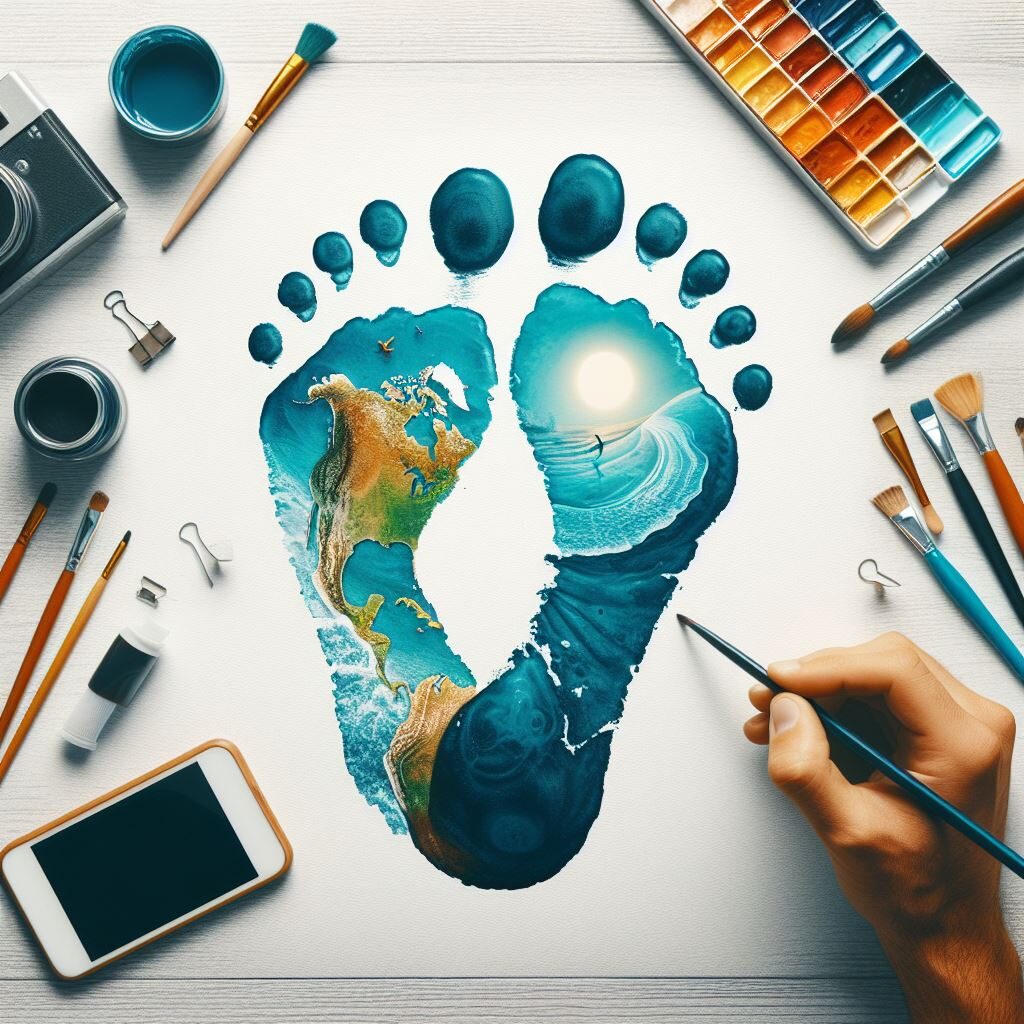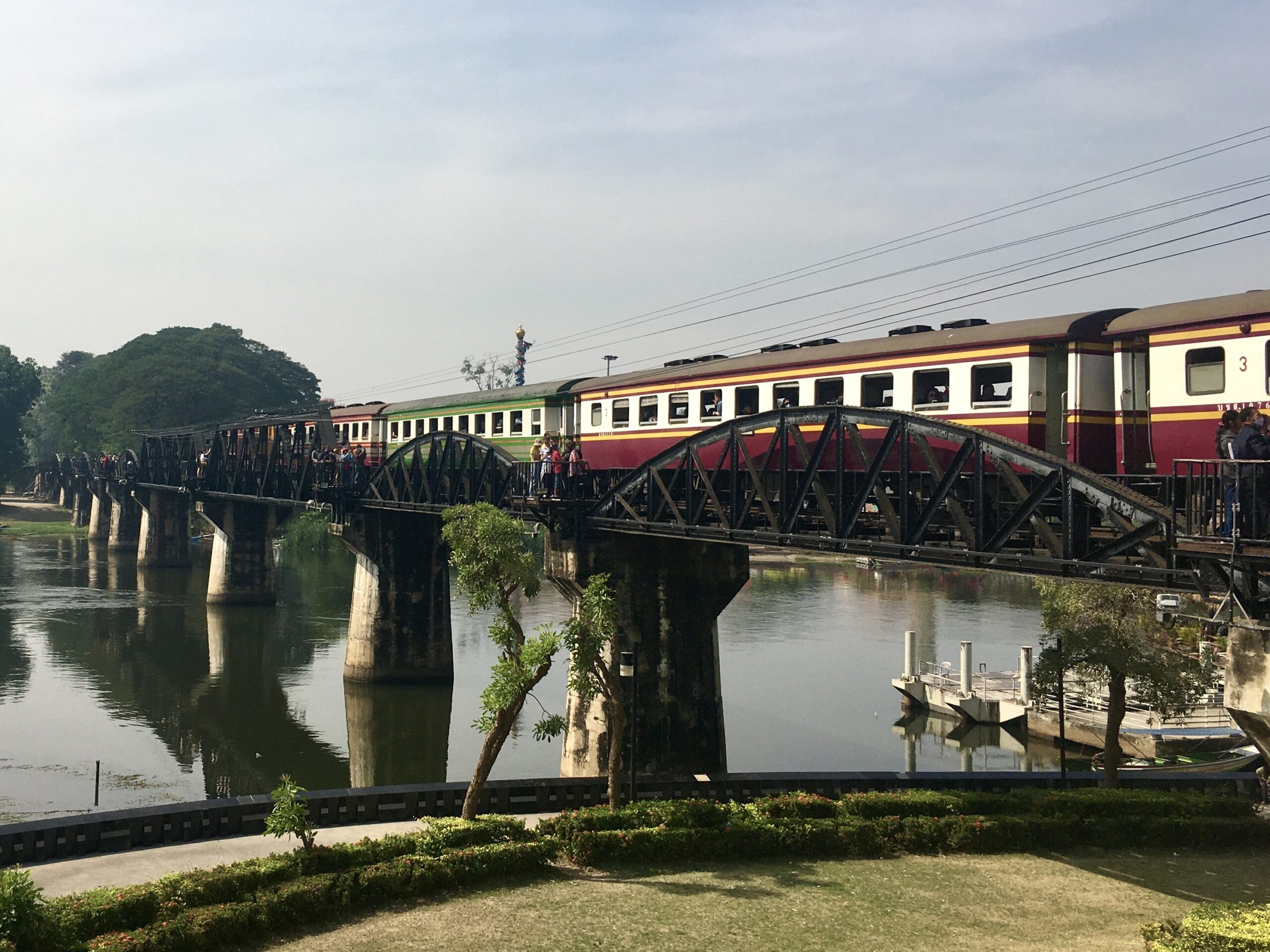The Death Railway
 I read a lot, especially enjoying military history, and have read hundreds of books on the Pacific theater during WW2. I read Pierre Boulie’s book ‘The Bridge on the River Kwai’ as a kid, then loved the movie later on. It was one of Julie’s Father’s favorite movies and my Dad’s as well. I was stunned when I learned more about the ‘Death Railway‘ in my later readings. This road to Mandalay was a brutal one. so when we moved to Thailand, I knew that I was going to visit the Khwae Yai River sooner or later. It turned out to be sooner.
I read a lot, especially enjoying military history, and have read hundreds of books on the Pacific theater during WW2. I read Pierre Boulie’s book ‘The Bridge on the River Kwai’ as a kid, then loved the movie later on. It was one of Julie’s Father’s favorite movies and my Dad’s as well. I was stunned when I learned more about the ‘Death Railway‘ in my later readings. This road to Mandalay was a brutal one. so when we moved to Thailand, I knew that I was going to visit the Khwae Yai River sooner or later. It turned out to be sooner.
 Khwae Noi Valley
Khwae Noi Valley
A little History
Monday morning our tour picked us up at the hotel we had gotten downtown to make it for the early pickup. We drove an hour or so NW along the route of the Thai-Burma railway. Contrary to the romanticized film version, there were several bridges and they represent a period of terror, desperation, and death for over 16,000 POWs and 100,000 local slaves. The Thailand – Burma Railway was the vision of the Japanese Imperial Army. It was a 250-mile track cut through thick jungle so they could connect Bangkok and Rangoon. The ruthless Japanese engineers used POWs and local slaves as manpower. The area they were working in had been considered by the British but they abandoned it because the dense jungle and stone outcrops made it nearly impossible. However, the British were planning to use heavy equipment, and although there were a few pneumatic drills, the Japanese made their prisoners do it by hand. They drove drills into the solid rock with one man holding the drill and the other swinging a sledgehammer. Then they packed the hole with explosives to blast it. They carried the rock out by hand. No one was whistling as they went to work each day. The weather was hot and humid and rainy. They were fed very little – just rice mostly. The working conditions were brutal. After the Japanese were cut off from supplies by sea in Burma, they needed this resupply route finished and finished quickly.
The Bridge(S)
 Model of Typical Bridge
Model of Typical Bridge

 Very Basic Medical care due to limited supplies
Very Basic Medical care due to limited supplies
Although this area is a little drier than typical, the monsoon season was still a deadly time for everyone in the jungle, especially for the laborers in their weakened states. Cholera, dysentery, and malaria ran rampant and were the most common, but even a simple infection could mean death in the jungle. Most that survived never completely recovered and suffered lifelong issues, especially from the effects of malnutrition and vitamin deficiency. There were very few doctors. Allied medics filled those roles often. For you Marmite fans, it came in Red Cross parcels, although it was used more as a medicine than as a simple food due to its scarcity. It saved many men during their recovery from various sicknesses and ailments.
 Bronze of the Allied Soldiers
Bronze of the Allied Soldiers
 Names are telling
Names are telling

 The First Quickcrete
The First Quickcrete
 Very clever
Very clever
Hell-Fire Pass
 The Cut
The Cut
Walking down the hill from the Hellfire Pass Interpretive Centre put us in a somber mood. With the smoke from recent forest fires and farmers burning fields in Myanmar, the sky was gray. The tragedy of the place was a bit heavy on us that day. This rock-cut reminded me of the one on the railroad in my hometown, just far larger. It was the largest rock-cut the Japanese attempted. Its remote location, elevation above the river, and the lack of modern equipment, among many other variables, made it a difficult job for certain. I learned Underwater Demolition in school, and all these poor souls had to blast with were low-yield powders, so they had to drill many more holes for blasting, all with just a hammer in hand.
 Few typical tools.
Few typical tools.
 This broken bit may have cost someone their life
This broken bit may have cost someone their life
 Sweat and Tears for this remnant
Sweat and Tears for this remnant
 One End
One End
 photo: w/ permission of the Australian War Memorial
photo: w/ permission of the Australian War Memorial
 A Beautiful and Sad Place
A Beautiful and Sad Place
It gets dark early in Thailand. Hellfire Pass is 14 degrees North of the Equator, so the difference between Sunset and Sunrise is only around 15-20 minutes throughout the year. Both Sunset and Sunrise happen between 6:30 and 7:00 roughly. And that’s where the name Hellfire Pass originated. It was s scene from hell when the men were working by oil lamps, bamboo fires, and torches on the rock faces well into the night. Being required to work eighteen hours a day, their gaunt and dirty bodies looked like a horror show I bet. Hell itself! The guards beat 69 allied prisoners to death during the six weeks it took to dig and blast this deadly stretch of rail bed construction. The workforce of contracted laborers from neighboring countries fared even worse than the Allied prisoners. Their contracts were worthless pieces of paper once they arrived on the project. They were lured and deceived by promises of good treatment and good pay from the Japanese, but they were treated as expendable slave labor.
 111 Japanese and Korean guards were executed for their crimes during the year-long construction of the railroad. Many more were convicted with long jail sentences.
111 Japanese and Korean guards were executed for their crimes during the year-long construction of the railroad. Many more were convicted with long jail sentences.
The Cost of Brutality
 It has always blown my mind how war brings out the worst and most primal behavior among the combatants, and the Japanese guards were notorious for their cruel treatment of captives. They also dished it out to their own almost as harshly, and you know what flows downhill. Most of the books that I’ve read on the Japanese conquests during the war are full of beheadings, torture, starvation, and beatings that were, unfortunately, very common throughout the Pacific Theatre.
It has always blown my mind how war brings out the worst and most primal behavior among the combatants, and the Japanese guards were notorious for their cruel treatment of captives. They also dished it out to their own almost as harshly, and you know what flows downhill. Most of the books that I’ve read on the Japanese conquests during the war are full of beheadings, torture, starvation, and beatings that were, unfortunately, very common throughout the Pacific Theatre.
 There are three Allied war cemeteries associated with the construction of the railroad. They are the Chungkai, Kanchanaburi, and Thanbyuzayat War Cemeteries. They hold the bodies of 12,493+/- allied soldiers. All 356 US servicemen‘s bodies were repatriated. The numbers break down to; British-6,540, Dutch-2,830. Australia—2,710, Malayan-220, Indian-33, New Zealand-5, Canadian-2, Burmese-2, Unknown-149, Other-2.
There are three Allied war cemeteries associated with the construction of the railroad. They are the Chungkai, Kanchanaburi, and Thanbyuzayat War Cemeteries. They hold the bodies of 12,493+/- allied soldiers. All 356 US servicemen‘s bodies were repatriated. The numbers break down to; British-6,540, Dutch-2,830. Australia—2,710, Malayan-220, Indian-33, New Zealand-5, Canadian-2, Burmese-2, Unknown-149, Other-2.
The total number of Americans working on the project was around 700, with 356 losing their lives. The British had 30,000, the Dutch 18,000, and Australia 13,000. That’s dismal odds for certain, and many of these men were mistreated on their journey to the work camps, often arriving already in desperate and dismal shape. They were survivors of ship sinkings, defensive battles, and other crazy things that happened in the fog of war only to end up in a living hell as captives of the Japanese. It is sobering to contemplate.
Train Ride Back
We visited the cemetery in Kanchanaburi and then spent the night on the River Kwai Jungle rafts before we visited Hellfire Pass and it’s Interpretive Museum, so we took the excursion train back to the big bridge on the River that was built by POW’s in 1943.
 Vintage Passenger Car
Vintage Passenger Car
 Train crossing the bridge.
Train crossing the bridge.
 Construction plaque
Construction plaque
A Songthaew ( pickup truck taxi) came and picked us up from the dock and delivered us to the train back to the River Khwae Bridge. The ride back was through fields of cassava, banana, and crops I didn’t readily recognize. It was a beautiful ride through the countryside. The productivity of the land and the Thai farmer is amazing to me every time I see it.
 Cassava
Cassava
 Scenic Ride
Scenic Ride
 Rail Shack
Rail Shack
The train line back to the bridge has some tricky engineering. It’s built in stretches on the steep bluff beside the river and was a nice ride considering the cost and the effects of its construction. This is an incredible part of Thailand, and the Death Railroad is a tremendous part of Thailand’s modern history. I suggest visiting this part of Thailand as part of your itinerary. The River Kwai Jungle Rafts are well worth a visit if you need a take-it-easy-as-you-wish-kind of a break as well. There are many resources out there to help you plan your trip, and I will respond to comments if you have questions.
Safe Travels, and Remember…Leave Slowly and Come Back Quickly

